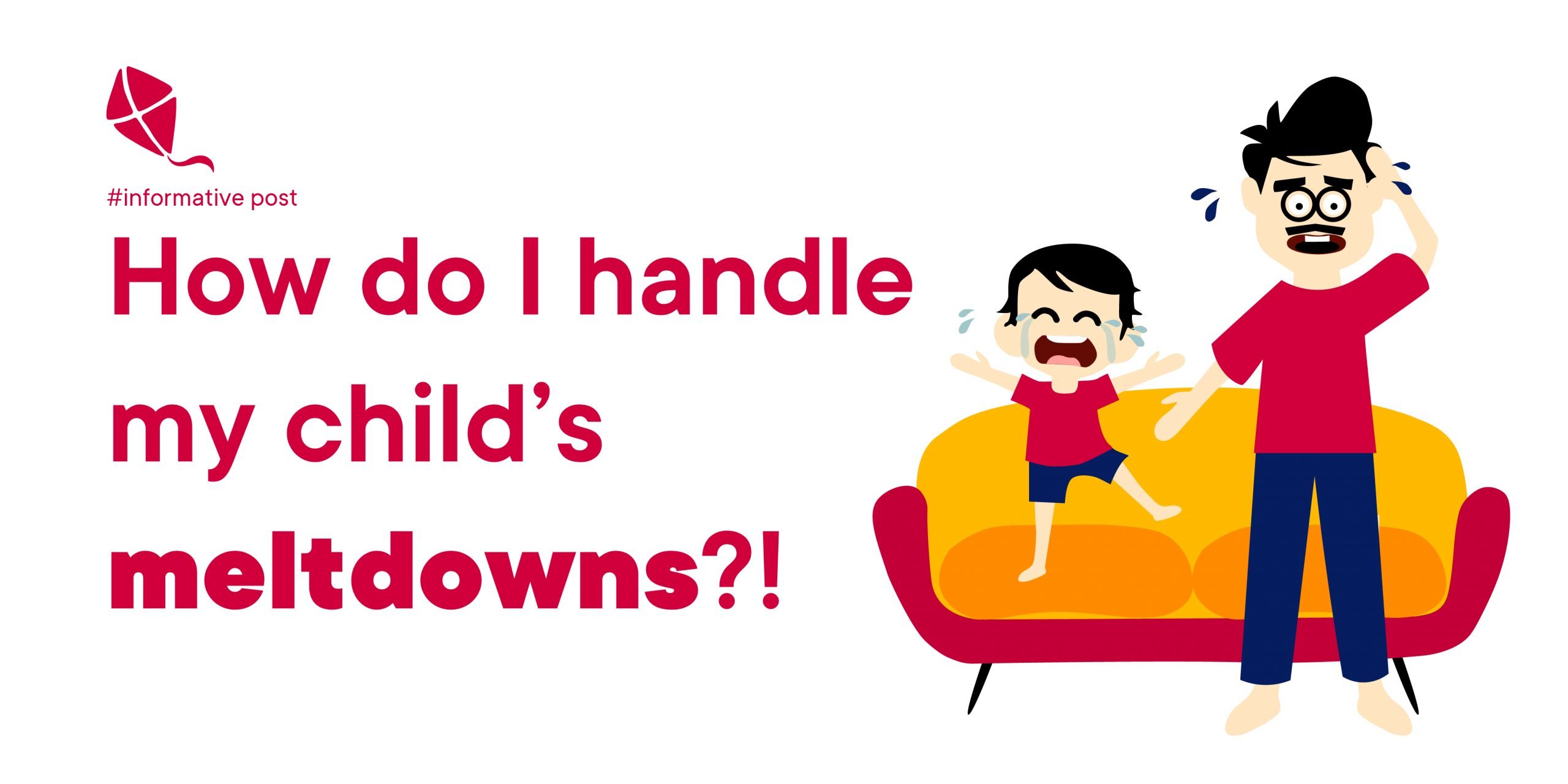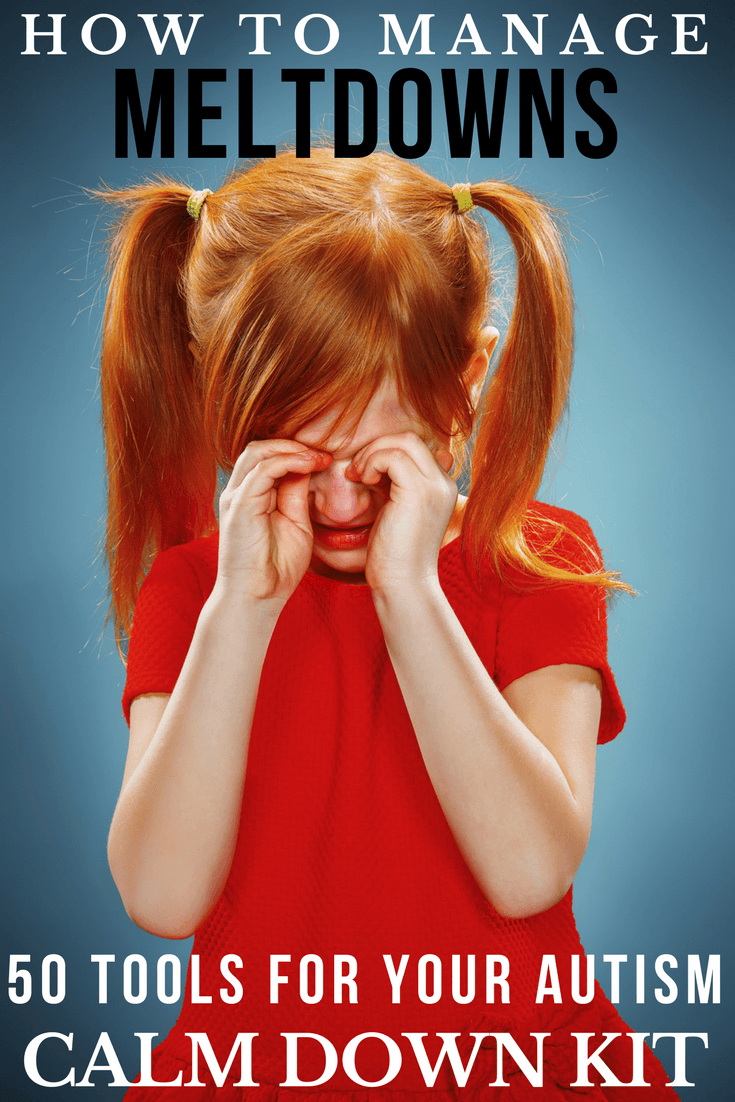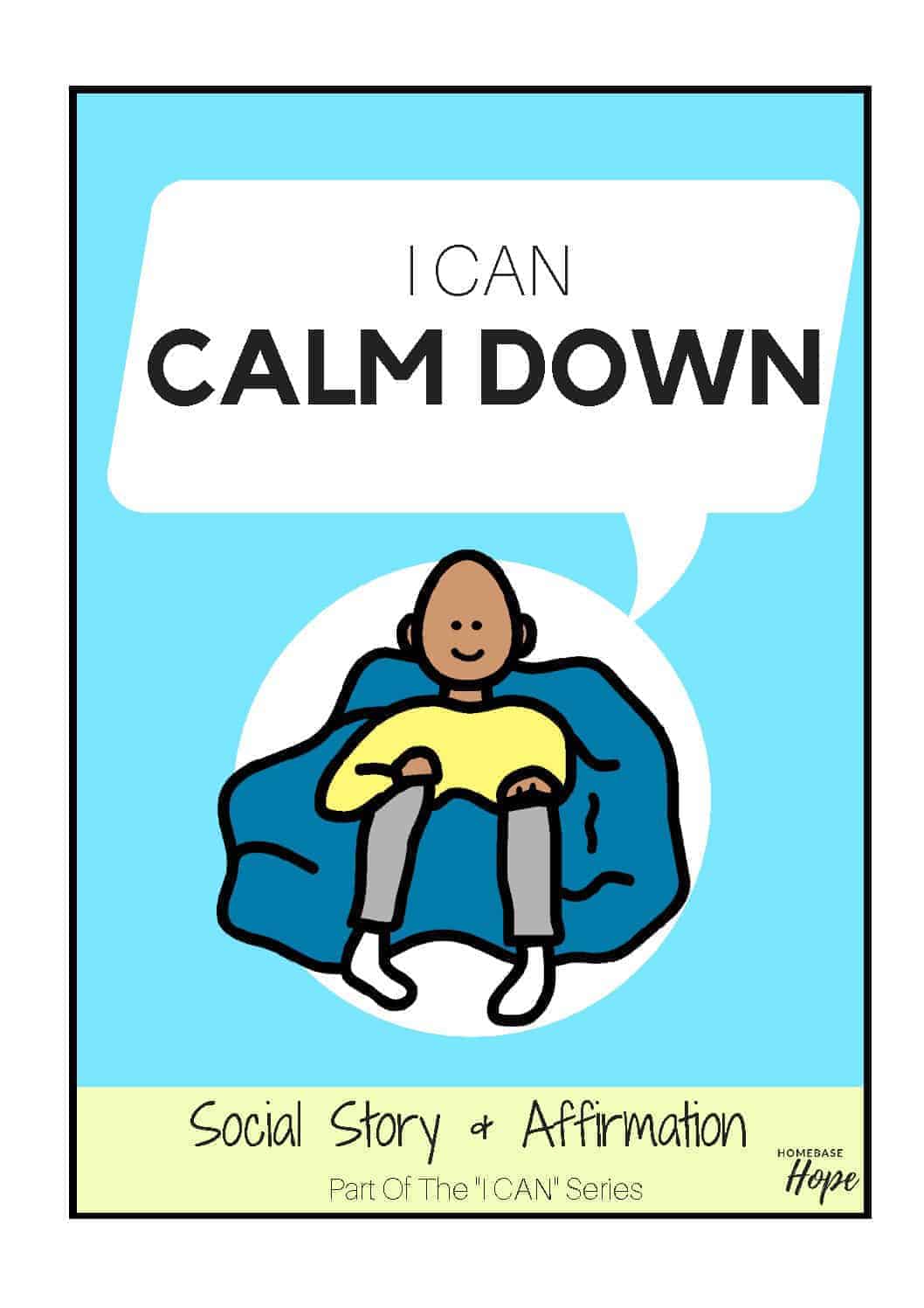How To Calm An Autistic Child
Techniques for avoiding and managing meltdowns by Lisa Jo Rudy
Autistic Children can have a tough time managing their behavior. Even high functioning children can meltdown in situations that would be only mildly challenging to a typical peer. Children with more severe symptoms can get very upset on a daily basis. Meltdowns and anxiety can make it very hard to participate in typical activities or, in some extreme cases, to even leave the house.
Its not always easy to calm an Autistic child, but there are techniques that can often be successful. Some require a bit of extra equipment that offers sensory comfort. Some of these items can be used in settings like school or community venues. If they work well, theyre worth their weight in gold.
Whats The Difference Between A Meltdown And A Tantrum
A good place to start is by understanding the difference between a sensory meltdown and a tantrum. The two are easily confused which is why many dismiss meltdowns as nothing more than a badly behaved childs cry for attention. This couldnt be further from the truth.
Tantrums are behavioural outbursts which are a deliberate attempt to get something. A child could have a tantrum for many different reasons. They could, for example, want their parents attention or perhaps they want their parents to buy a specific toy. Unlike meltdowns, a child having a tantrum is in control of their behavior, and will most likely stop acting out when they get what they want. Tantrums and meltdowns are very different and cannot be handled in the same way. By simply dismissing a meltdown as a petulant child acting out, you can cause severe harm to a child with special needs.
We put together some tips which may help you calm your special child during these trying times. But remember, what calms one child with special needs may not work for another. The important thing is to be understanding, patient and loving. That is after all what a child needs most during a sensory meltdown.
Why Are Calm Down Kits For Kids Useful For Kids With Autism
Autism and anxiety often co-exist. Many children with autism suffer from anxiety. Children with autism have a tendency to become overwhelmed particularly in situations that are overly stimulating or if the wait to do something is long. In this case, a calm down box can help reduce stress and turn your childs mood around.
Sensory Activities For Children With Autism
Because children with autism are often hyper aware of sensory input, its helpful for educators to provide accommodations so their students can focus in class. These activities involving sensory stimulation can keep kids with autism grounded in the present and comfortable learning with the rest of their classmates.
Teach Students About Historical Figures With Autism

Although the disorder wasnt discovered until the twentieth-century, people with autism have made important contributions to history, and its important to educate students about themnot just in April but throughout the year. Here are a few well-known figures who are diagnosed with or believed to have had autism to get you started:
- Greta Thunberg
- Emily Dickinson
How To Use Calming Strategies For Kids With Autism At Home Or In The Classroom
First, you need to know if you are using these activities to prevent stress, hyperactivity and melt downs or if you are responding to a melt down.
I recommend planning out your days to prevent stress and hyperactivity and to also keep this post on hand for when times get tough and you need to use one of these strategies as a response to a melt down.
How To Calm A Child Before An Episode
Reassurance and love is something that every child needs. When they begin to experience a wobble and begin to feel isolated and alone, its important for parents to offer tender reassurance.
Show Them You Care and Help Them Feel Better
Verbal communication is a source of great frustration for many autistic children. Not communicating in the way that theyd hoped may cause a wobble to escalate to an episode.
If the child isnt responding to you, parents are advised to communicate through images. Sharing the experience of autistic child videos together will bond you and your child together in the moment and help them feel better at the onset of an episode.
Self Calming Strategies For Kids With Autism
Some of these strategies utilize sensory activities such as with a sensory bin or something that you can squeeze. My daughter, for example, absolutely loves bean based sensory bins.
Typically, when it comes to looking for an ideal self-calming strategy, you want to find something that helps your child focus.
Whether thats through sensory input or breathing, or another method. Well explore quite a few things!
Do keep in mind that some of these may not be the best for kids who have issues with mouthing non-food items. Other activities are perfect for those kids!
And yes, I am including fidget spinners. While these may still cause some controversy in the classroom, theres really no denying that they are useful.
Calming strategies do not have to be limited to the indoors.
Sorting With Snacks Activity
This tactile activity for children with autism can be a fun way to engage students during math time. Give everyone in your class a food that is easy to sort, like chewy snacks or small crackers. Multicolored snacks are ideal, but you can also use food that comes in different shapes, textures, or sizes.
First, ask them to sort the food by color, shape, or another characteristic. Then, use the snacks to teach students basic math skills like counting, adding, or subtraction. Once theyve grasped the concept you want to teach, reward your students by letting them eat the snack.
What Is An Autistic Meltdown
Most, if not all, parents of children aged 2 and older have experienced a temper tantrum at some point in their lifetime, but few people truly understand the difference between a tantrum and an autistic meltdown. On the surface, they look pretty similar, but while temper tantrums are often goal-driven behaviors fuelled by an audience, autistic meltdowns typically occur in response to feelings of overwhelm and happen with or without spectators.
Temper tantrums are often a manipulation ploy used by small children to try and get what they want and can typically be rectified through appropriate discipline. Autistic meltdowns, on the other hand, can happen at any age, are more intense and emotional, and typically last much longer. A meltdown typically begins with warning signals called rumblings, which are characterized as a build-up of emotions that cause screaming, stimming, pacing, and other behaviors that indicate the person is about to lose control, and if not redirected in time, can lead to an explosive rage.
Managing autistic meltdowns can be extremely difficult. Unlike temper tantrums, autistic meltdowns cannot be lessened through rewards and bribes as the purpose of the meltdown isnt to obtain something. There is no end goal other than gaining control over an overwhelming situation, and it takes time for parents and caregivers to figure out how to calm an autistic child, and how to prevent such behaviors from occurring in the first place.
What To Do When An Autistic Child Has A Tantrum
Now that you understand the fundamental differences between temper tantrums and meltdowns, youll recognize that the strategies to address tantrums are rooted more in behavioral supports and skill-building.
There are a number of parent-friendly resources that target tantrum management strategies and the majority of them focus on a three-fold approach/
Focus On What You Want The Child To Do Not What You Want Them To Stop Doing
How many of you have screamed at your child, STOP SCREAMING?!!!! with crazed eyes and clinched fists?
Minimize the use of dont and stop. For example, Walk on the sidewalk can be much more effective than Dont walk on the grass for a child who might not hear the dontor for one who isnt sure where the acceptable place to walk might be. This lets the child know exactly what you WANT them to do. ‘Stop screaming’ becomes, ‘Quiet please’, ‘Don’t color on the table’ becomes ‘Only color on the paper’. It’s counter-intuitive to the ways most of us usually parent but it works. There are times when there’s NO WAY around a don’t/stop statement. DON’T COLOR ON THE DOG. STOP HITTING YOUR BROTHER. Use your best judgement- you’ll figure out when you need to lay down the DON’T law.
Here I ignore his screaming because he was mad that I gave one of his cars to his brother when he didn’t want to share.
Here I praise him, “Great job being quiet and playing with your cars.”I know, it feels a little weird at first, ignoring your child while they are screaming or throwing themselves on the ground. But when they do that, they are attention seeking and giving them any kind of attention reinforces that behavior. They will learn it doesn’t work and realize they get more attention when their behavior is good.
Busy The Fingers To Quiet The Mind

Fidget toys can distract a child from anxious thoughts and refocus the mind onto something calming. Monica Gomez, social skills coordinator at Frostig School in Pasadena, keeps a boxful of fidgets for her students, some of whom have social or academic anxiety. These are just one tool we use to help navigate that, she says.
It might take some trial and error to determine which sensations pulling/squeezing, rubbing/touching or chewing are most calming for your child, and which objects are the best fit. But there are lots of choices, many inexpensive. Sometimes a piece of ribbon to keep in your pocket, a piece of velcro under the desk or a balloon filled with flour are all you need, says occupational therapist Jennifer Jones, who works with Troutman at the Center for Developing Kids. Some kids like chewable jewelry. Other fidget ideas include small Slinkys, stress balls, small rubbery toys and Silly Putty.
Techniques For Avoiding And Managing Meltdowns
Children with autism can have a tough time managing their behavior. Even high functioning children can “have a meltdown” in situations that would be only mildly challenging to a typical peer.
Children with more severe symptoms can get very upset on a daily basis. Meltdowns and anxiety can make it very hard to participate in typical activities or, in some extreme cases, to even leave the house.
It’s not always easy to calm a child with autism, but there are techniques that can often be successful. Some require a bit of extra equipment that offers sensory comfort. Some of these items can be used in settings like school or community venues. If they work well, they’re worth their weight in gold.
Verywell / Brianna Gilmartin
Calming Strategies For Autism Meltdowns
Now, before I jump into these strategies, I have a word of warning.
Please dont do all of these immediately when your child starts a meltdown.
You need to know what works for your child, and what their sensory preferences are.
Not every strategy will work for every child, so test them out one at a time to see what works best for your child.
Treatment For Aggressive Children With Autism
Knowing how to stop an autistic child from hitting is key. Aggressive behavior can hinder a childs progress at school, at home, and in social interactions. If your child has an autism diagnosis and is engaging in aggressive behaviors, seek treatment options as soon as possible.
The earlier the intervention , the greater your childs chances of developing alongside their peers and becoming independent.
At Therapeutic Pathways, our Board-Certified Behavior Analysts put together an ABA treatment plan for each child engaging in aggressive behaviors. We work diligently to remediate harmful behaviors and encourage children to engage in safer, more appropriate behaviors.
For more information and to learn more about our ABA methods, contact Therapeutic Pathways at 422-3280 to see if our Behavior Center program is right for your child.
How To Handle A Meltdown In Public
This can happen to anyone. Parents and caregivers could be low on patience while also hurting for their struggling child.
Remember that autistic children do not have meltdowns and cry or flail just to get at you.They cry because they need to release tension from their bodies in some way. They are overwhelmed with emotions or sensory stimulations.
There are some ways to effectively support your child when they are having a meltdown in public. Here are some of them.
Equip them with coping skills: Meltdowns cant be helped at that very moment. But afterwards, you can teach your child how to regulate their emotions. Try relaxing activities like going for walks. These calming activities will help them calm down even before the meltdown happens.
Feeling safe and loved: Trying to talk a child down from having a meltdown is not a great strategy when it comes to calm an autistic child. Be there for them. Let them know that they are safe at that moment. Stay close as much as their comfort allows. Dont leave them alone to be out of a meltdown and find no one in the room. This could send a message that they dont deserve to be around the people they love when it gets tough.
Empathy is key: Listen and understand their situation. Tell them expressing emotions is okay, and sometimes it can get overwhelming. If your child with autism can feel like they are being heard, they will feel that their experience is validated. Try to give them tools to express themselves in a safe way.
How Do I Discipline A Child With Autism
Self control, patience, assertiveness, positives, no shouting, routine. The following is an explanation answering the question of learning how to calm down an autism child.
1.Discipline with kids can be complicated, as it is known that kids would always be kids. This simply implies that kids are expected to behave like kids. They can be restless and often dont listen to instructions. This can be more emphasized in autistic children. However, they should not be given a free pass. They should be taught self-control and corrected constructively
2. Patience and assertiveness: Parents must understand that it might take a while before they understand what make the child tick. However its important to know that they will improve over time if the tips listed here are duly followed.
5. Have a set routine: Having a routine and well-structured day to day plan makes it easy to monitor and identify whatever might be the reason why the child is misbehaving.
Ways To Handle Violent Autistic Behaviour
Responding to violent autistic behavior in toddlers and children requires significant parental considerations. Interspersions, not intensities; will worsen the behavior further for the child. For example, lets take Adam, who likes hit the child next to him in school because he likes to hear the other childs reactionHe hit me! Or, lets talk about Sophie; who, out of jealousy, throws her classmates stationaries off the table and on the ground.
For children with high functioning or borderline autism, it is often the attention they get from being difficult that keeps children into the habit. For parents, the time to act is now! If you dont intervene today, the problem would only grow, not to mention that there can be another child victimized tomorrow.
While many of you may have taken temporary measures to alleviate this problem, unless you have a longer-term autistic behavior control strategy in place, the child might end up hurting several others and in worst cases, him/herself.
How To Use The Calm
Once you have the items, place them in a backpack or cloth bag, and take the kit with you in your car or on the go. Then, once a sensory meltdown starts, use the items either to refocus your childs attention and lessen the magnitude of the meltdown after it begins. Keep in mind, too, that you can use the kit anytime, even during typical downtime. Using the calm-down kit during downtime will serve as practice and enable your child to figure out what items help in times of distress.
Again, the goal of the calm-down kit is to give kids the tools they need to transform their inner state from upset to calm. These kits can make all the difference, not only for your child but also for you, as a parent or caregiver.
Want to learn more about sensory issues? Listen to our podcast, How Lighting Can Affect Your Circadian Rhythm, on All Autism Talk.
Calm Down Corner Technique

The idea behind a calm down corner is that you have a designated space in your home or classroom where your child or students can go to, you guessed it, calm down! It is important to note that I am not recommending you use this space as a punishment. This should be a positive space that helps your little ones calm down quickly. These sensory room tips can help you set one up in your home or classroom.
If you need some more help setting up your calm down corner, I love this .
Remove Any Dangerous Objects
Its important that you remove any objects from the vicinity which could harm your child. This includes everything from glass shelves to hard objects which your child may throw. Its best to take your child to a room or space free of clutter and other people. However, its not enough to simply isolate your child. To prevent injury during a meltdown, youll need to monitor your child closely until theyve calmed down completely.
What Do Tantrums Look Like
Tantrums differ from one child to another. They can be spectacular explosions of anger.
The child may lose it with frustration and disorganized behavior.
During tantrums , the child may cry, stiffen up, scream, kick things around, fall down or run away. Some children hold their breath, and some even vomit.
They may break things around the house. Children with autism could get aggressive when they are throwing a tantrum fit.
This is how autistic children may express their frustration with the challenges that they are facing.
Thirst , hunger, tiredness: Some examples that can lead to tantrums.
When they get frustrated, they get angry. And when they get angry, they can throw a tantrum.
Come along with 200k+ families!
Let’s communicate better!
How To Make A Calm Down Kit For Kids With Autism
Wondering how to make a Calm Down Kit for Kids with Autism? Looking for Calm Down Box ideas? Ive got you covered! I use Calm Down Boxes in my coaching programs all the time. They will be a valuable calming, sensory tool for your child or students. Calm Down Kits are easy to make and so helpful in regulating emotions and helping kids with autism calm down and focus. Make a sensory bin next!
Hold A Professional Development Session On Autism
Its so important to teach faculty about autism awareness, too. If youre a school administrator, consider holding a professional development session on teaching students with autism or sharing a few resources.
For example, the Regional Educational Laboratory Program has put together a helpful resource for administrators on how educators can support students with autism during remote learning.
Is Hitting A Sign Of Autism
Hitting is not a universal sign of autism but people with autism tend to engage in behaviour that can cause harm to themselves or others when they feel frustrated, overwhelmed or unwell. Some of the behaviours that you may see are banging their head on walls or other objects, hitting themselves or others and hitting their head with their hands. Since some of them lack communication and social skills, this seems to be an adaptive behaviour that gets them the attention they desperately seek.
Soothe With The Senses
Certain sensory tools can help relieve stress in a child with autism, so find out what works best for your students and keep these tools within reach. For example, they may feel soothed by squeezing a squishy ball of clay or fidgeting with a toy or other trinket. Others may enjoy rocking back and forth or bouncing. Substitute large balls for chairs and the child may naturally be able to calm themselves by gently bouncing during class.
Recognizing The Motivation Or Purpose Of The Tantrum Behavior
Here are a few examples of motivation children might have:
- to get attention
- delayed access to what he wants/needs
Once you identify WHY your child is tantruming, you can respond more appropriately.
Recognize your childs needs in the moment, without giving into them.
For example: Bobby wanted to choose the TV show but his sister put on Sesame Street before he got to the remote to turn on Dora. Bobby is now on the floor kicking, yelling, and crying . Bobby wanted to choose Dora as the TV show but didnt get his way . The adult could calmly, concisely respond with I see that you are because you didnt get to choose your TV show. When youre calm, well talk about it .
When Bobby calms down, he can then be engaged in conversation about how to solve the TV show problem but he does not get his Dora TV show immediately.
Tip 2: Get Them Sensory Toys To Help Lower Anxiety

There are many options online, from squeezy balls, soft clay, toys with bright colours or simply toys with textures. Youll be amazed at all the options out there.
Very often, your child will show signs of distress before they go into a full tantrum or a meltdown. Identify, by reading the situation/context, if your child is angry, anxious, or just having a sensory overload. These types of toys are said to be helpful to help children with sensory overloads to lower their anxiety.
Our Home Is Safety Proofed
Youre probably familiar with baby proofing a house. But while most families can take down the safety gates and doorknob locks once the child ages, families with children on the Autism Spectrum often have these items and more protecting their child from their homes inherent dangers. This is because many children on the Autism Spectrum are prone to behaviors that can bring about self injury.
What Would You Do
For a take-home activity you can share with families, try this What Would You Do? game. Families can go through different scenarios together and decide how they would react with questions like How would you help? or What would you say?
This activity keeps social skills sharp and reinforces relationship-building skills.
Identify And Remove Sensory Triggers
Youve probably already identified stimuli which tend to trigger meltdowns for your child. For some children with special needs this can be a visit to the town pool or a ride on a crowded bus to camp. The important thing is to be aware of your childs sensory sensitivities so youll be prepared to act should a meltdown occur. In addition, youll want to keep record of stimuli which make a meltdown worse. This could include loud noises or flashing lights. You may even find that talking to your child during a meltdown can exacerbate the symptoms.